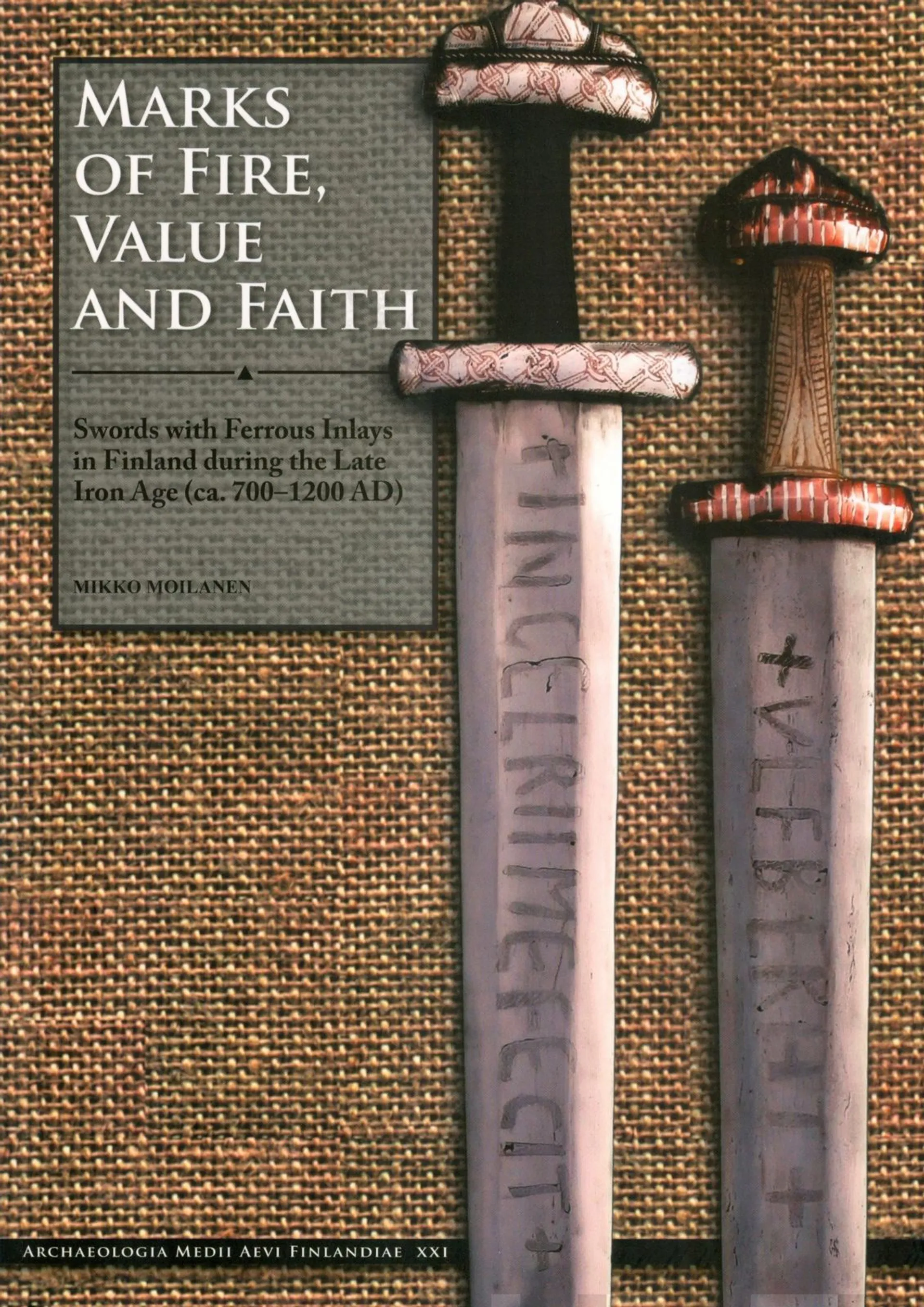This study explores swords with ferrous inlays found in Finland and dating from the late Iron Age, ca. 700-1200 AD. These swords reflect profound changes not only in styles and fashion but also in the technology of hilts and blades. This study explores how many of these kinds of swords are known from Finland, how they were made and where, what their status was in Late Iron Age Finland, and where the Finnish finds stand in accordance with other areas of Europe. The various methods included measuring of the finds and statistics. The main method of revealing the inlaid marks was radiography due to its non-destructive nature. In cases where inlays were visible without radiography, their details were inspected via microscopy. To study the materials and manufacture of inlaid swords, a sample of them was metallographically analysed to determine the forging technologies and nature of used materials. Furthermore, the manufacture was also studied with experimental approaches. As a result, a catalogue of 151 swords with ferrous inlays was created. This number is relatively high compared with other European countries, although systematic studies have been conducted in only some countries. The inlaid motifs were classified into five distinct categories to help the classification. To summarize, almost every documented inlaid sword was unique in some respect including measurements, inlaid motifs and materials of blades and inlays. Technological variation was also present, some blades being poorer and some of higher quality in spite of the inlaid motifs. Misspelt inscriptions as well as letter-like marks were common in Finland and also in Scandinavia. Furthermore, the provenance of iron and steel used in some blades hints at Scandinavian ores. The above observations, along with the experimental results indicating the existence of multiple alternative techniques of inlaying, suggest that these swords were manufactured locally in Scandinavia, most likely in imitation of Continental European models. Inlaid swords were valued partly for their assumed functionality in combat, as evidenced by damage on some examined blades, or they were valued for their inlays, which could have had fashionable or symbolical meanings bound to local beliefs.
Moilanen, Marks of Fire, Value and Faith
Huomaa pidempi toimitusaika
Huomaa pidempi toimitusaika
Tämä kirja on hankintatuote, joten toimitusaika voi olla tavallista pidempi. Arvioitu toimitusaika on noin 1–4 viikkoa.
- Ilmainen palautus 30 päivää
- Ilmainen toimitus Postin noutopisteeseen yli 100 € ostoksille.
- Asiakasomistajalle Bonusta jopa 5 %.
Oletko tyytyväinen tuotetietoihin?
Ovatko tuotetiedot riittävät? Jos tuotetiedoissa on puutteita tai niitä voisi muuten parantaa, anna palautetta.
